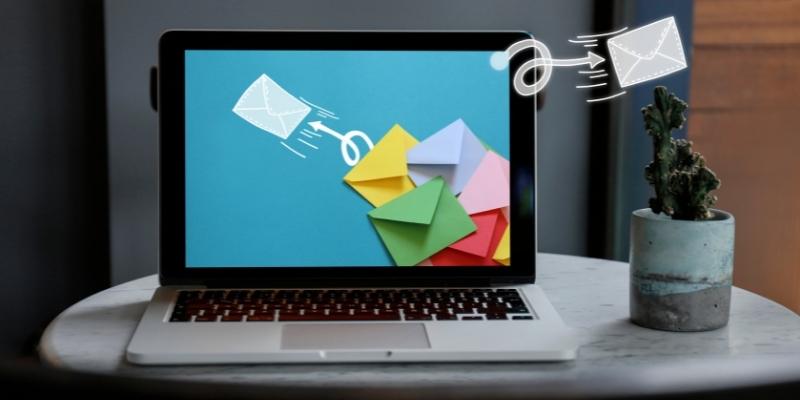
Email marketing offers businesses a valuable opportunity to communicate directly with their target market and build customer relationships. This can cause marketers to place a lot of value in their email contact lists, and avoid removing any stored addresses from their database. However, there are times when it will be more valuable to your campaigns to remove some contacts than to keep them.
This blog explores the factors to look out for that indicate it is time to clean out your contact lists and the value this can add to your email marketing. It will also look at some best practices on how to do this, from sending a re-engagement campaign to implementing email verification tools.
When should you clean out your email list?
How often you should clean your contact lists will vary depending on a number of factors, such as the size of your database, the frequency of your email campaigns and the rate of growth and attrition in your list.It could also vary depending on who you sell to. If you sell a B2B product or service, how long do your buyers tend to stay in a role or at a company? Or, if you sell to consumers, are they likely to use a temporary or disposable email address when they sign up to buy something online to prevent clutter in their main inbox?
Most businesses should look to do this at least once a year. However, if the number of subscribers you gain or churn each month is high, it is likely you will need to check the health of your email lists more frequently.
While it is important to regularly cleanse your contacts, there are a number of signals that can also indicate it’s time to do this. These can include:
- Low deliverability
- Increased bounce rate
- Spam complaints
- Increased unsubscribes
- Low click-through rate (CTR)
It is important to monitor these metrics at all times to identify any potential issues with your campaigns and address them efficiently. This will help to reduce risk to the performance of your future campaigns while you wait until your next planned cleaning.
Why are clean email lists important for your marketing?
The success of your email marketing efforts rely not only on the quality of your email content, but also on the quality of your contact lists.
Over time, your lists can accumulate problematic email addresses such as spam or fraudulent addresses, disposable emails, spam traps, and addresses which contain errors. Removing these contacts and avoiding sending communications to them can have significant benefits for the performance of your marketing campaigns, such as:
More engaged audience
By maintaining a clean email list, you are only going to be contacting people who are most likely to open and read your marketing content. These people will be more engaged, and will help to improve engagement metrics for your account, reducing the risk of receiving spam complaints and unsubscribes.
Improved deliverability
By regularly sending to disengaged or inactive contacts, you increase the chances that your communications will land in the spam folder or bounce completely, which can impact your future deliverability for every single person you send to - even the engaged ones. However, focusing on a higher quality contact list will help improve your current deliverability rate and reduce your bounce rates overall.
Improved sender reputation
Email sender reputation is one of the key metrics used by mailbox providers (MBPs) to determine whether your email will be delivered to the intended inbox. This score is affected by every positive and negative action related to your email campaigns and is built up or damaged over time.
Cleaning your email lists and improving the performance of your account will help to build your sender reputation and reduce the risk of landing in the spam folder.
So, how can you clean out your email list?
There are a number of ways you can improve the quality of your email lists. Some of the steps you can take include:
Routinely clean your email lists
At least once a year, you should make it a priority to clean out your email list. Determining the right frequency for your business will help you to protect your sender reputation and ultimately the deliverability of your campaigns.
Use a bulk email checker
Identifying spam traps, fake email signups, disposable emails, syntax errors, and other problematic addresses can be a difficult task. Using a bulk email checker will immediately spot these and allow them to remove them from your lists, helping to ensure that your emails reach an active and engaged audience.
Automate email verification at sign up
Integrating an email verification tool with your existing systems will allow you to confirm the validity of the address being used, immediately at time of sign up. This means that you will avoid sending any future emails to any spam, fraudulent, disposable, or other types of problematic addresses, identifying and addressing any potential risks to your sender reputation before they ever have an impact. This valuable tool will help to maintain a clean database of contacts going forward, protecting the performance of future campaigns as well as your sender reputation.
Send a re-engagement campaign
Launching a re-engagement campaign aims to encourage those contacts who are less engaged with your content but are not completely inactive to realise the value offered by your communications - or alternatively offer them the opportunity to update their permissions or unsubscribe. This will prevent you from contacting disengaged contacts and risking spam complaints in the future.
Learn more in our definitive guide to email verification
If you have more questions about how email verification can help you to maintain clean email lists and the value this can add to your email marketing, download our ebook.







